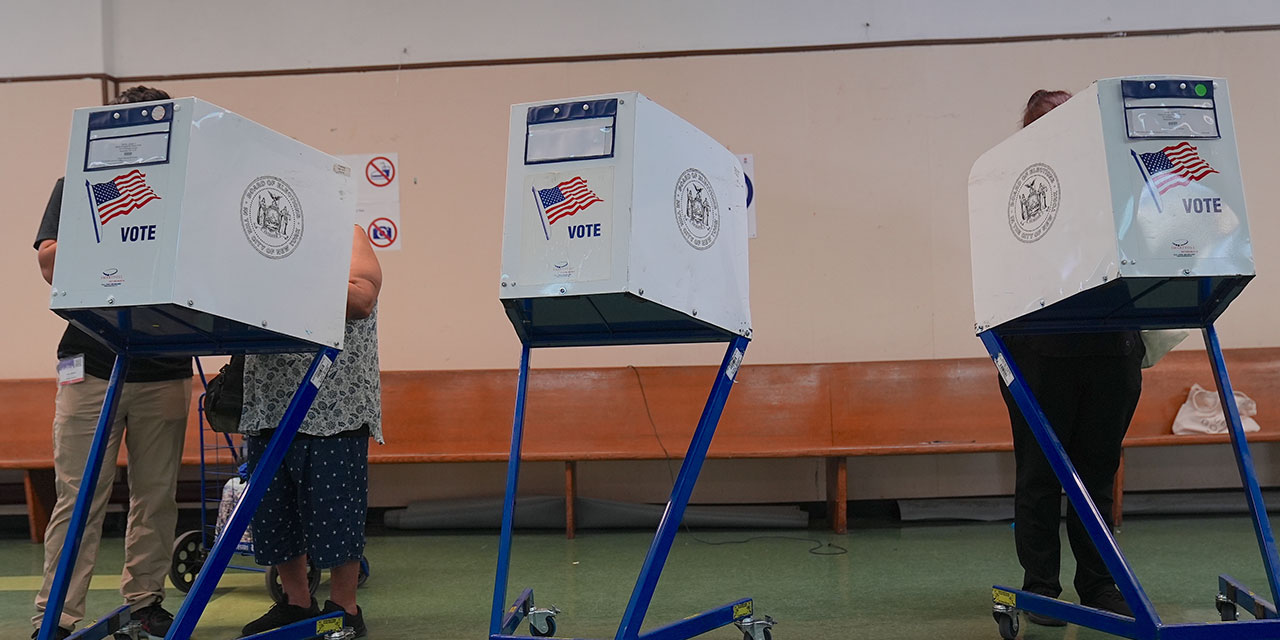
Zohran Mamdani’s surprising victory in this year’s Democratic mayoral primary was more than just a win for a young socialist assemblyman from Queens. It was the clearest sign yet that a new kind of political boss now dominates Democratic politics in New York—one that uses the same tools as the old bosses but for more rigidly ideological ends. The modern equivalent of Boss Tweed is the Working Families Party (WFP), which has leveraged state election law and other unique legal advantages to wield major influence over Democratic politics in the Empire State.
Founded in 1998 by a coalition of labor unions and progressive activists, the WFP was enabled by New York’s system of fusion voting. Unlike most other states, New York allows one political party to cross-endorse a candidate of another political party. The votes cast for a candidate on each of the party lines are aggregated, allowing minor parties to be something more than spoilers or gadflies.
Finally, a reason to check your email.
Sign up for our free newsletter today.
For decades, this system benefited minor parties like the Conservative Party and the now-defunct Liberal Party, which wielded influence by lending or withholding their ballot lines. But the Working Families Party has taken fusion politics to a new level.
That’s in part thanks to a 2006 state court decision that struck down a New York law that had prohibited parties from spending money in other parties’ primaries. With that restriction lifted, the WFP began to exert influence by funding, organizing, and running candidates in Democratic primaries across the state. It wasn’t just endorsing anymore—it was using its muscle to pick the winners of Democratic primaries.
The WFP also enjoys legal advantages that make it especially effective. As a recognized political party under New York law, it can coordinate directly with its candidates, something super PACs cannot do. It can accept contributions significantly larger than those permitted for most individual candidates—up to $138,600 per donor. These funds can be spent in support of WFP-backed candidates in primary elections, giving the party an outsize presence in low-turnout races, where just a few thousand votes can swing the outcome.
The WFP deployed these tools with precision in New York City’s 2025 mayoral primary. Its campaign focused not just on boosting Mamdani but also on blocking his chief rival and the WFP’s longtime nemesis, Andrew Cuomo. The WFP encouraged its supporters to rank anyone but Cuomo in the ranked-choice primary election system.
The strategy worked: Mamdani was ranked on nearly 60 percent of ballots, Cuomo on just 45 percent. Ranked-choice voting was sold to voters as a way to help centrist candidates win primary elections; the WFP turned this concept on its head and used the system to deliver a win to the most left-wing candidate in the primary field.
The WFP’s power also comes from its ability to enforce internal discipline, an important quality for any political boss. In 2018, the party backed primary challengers against members of the State Senate’s Independent Democratic Conference, a group of moderate Democrats who had broken away from their fellow party members in Albany. Though the IDC had rejoined the mainline Democratic conference by the time of the primary election, the Working Families Party still worked to defeat the senators, whom it deemed disloyal to the movement. When the votes were tallied, all but two of the former IDC members had gone down to defeat.
The WFP continues to police its ranks. A former ally, State Senator Jessica Ramos, was once a favorite of New York’s progressives. But after her own mayoral bid stalled earlier this year, she threw her support behind Cuomo’s candidacy. The WFP has already begun lining up a challenger—Assemblywoman Jessica González-Rojas—for a primary fight with Ramos in 2026.
The party may even expand its formal authority over its members. Before adjourning for the year, the state legislature passed a bill giving the WFP’s state committee the power to expel (or, as it’s known under New York law, disenroll) party members it believes are not in alignment with the party’s principles. Under current law, only county party leaders can remove members for disloyalty. Unlike the other recognized parties, however, the WFP has no organized county committees. The new legislation therefore lets the party exercise a power that it previously lacked.
Few doubt that the legislation was passed at the WFP’s urging. And few expect Governor Kathy Hochul, who desperately needs WFP support for her own reelection, to veto it. If the governor signs it into law, the party will gain a powerful new weapon to enforce ideological purity.
The WFP understands that machines aren’t built on message discipline alone—they require loyalists to occupy key positions. The old saying is true: personnel is policy.
Since Mamdani’s primary win, he has reshuffled his campaign team, appointing a longtime WFP apparatchik as his new campaign manager. The party’s former operatives now populate city council offices, state legislative staffs, major unions, and influential nonprofits. Such a network would have impressed any Tammany Hall ward heeler.
The Working Families Party speaks the language of social justice and grassroots democracy, but its methods reflect an older, more familiar version of New York politics: master the rules, control the levers of power, and punish disloyalty. By adopting the tactics of the city’s long-extinct political machines and updating them for twenty-first-century ideological warfare, the WFP has positioned itself as the new boss—one well on its way to dominating Democratic Party politics in the Empire State.
Photo by Selcuk Acar/Anadolu via Getty Images
City Journal is a publication of the Manhattan Institute for Policy Research (MI), a leading free-market think tank. Are you interested in supporting the magazine? As a 501(c)(3) nonprofit, donations in support of MI and City Journal are fully tax-deductible as provided by law (EIN #13-2912529).
Source link
















